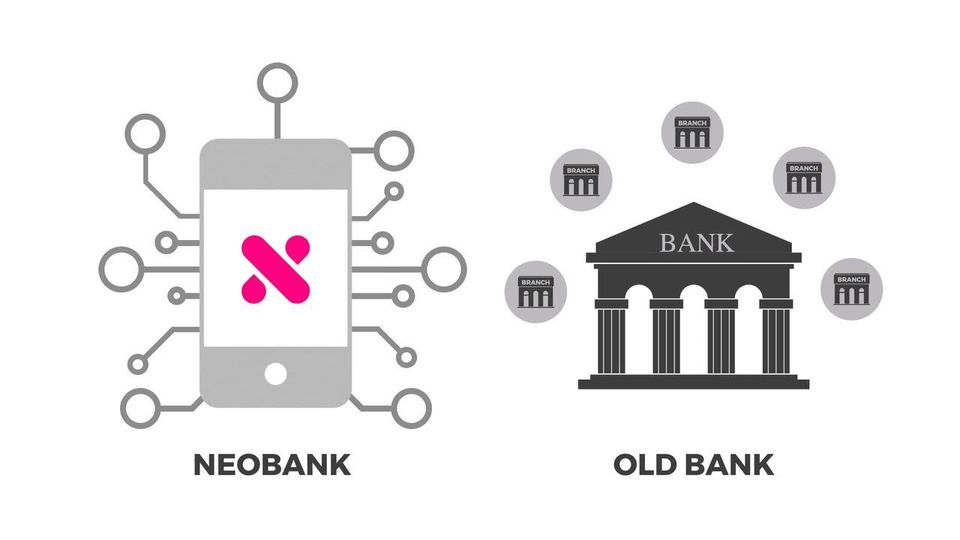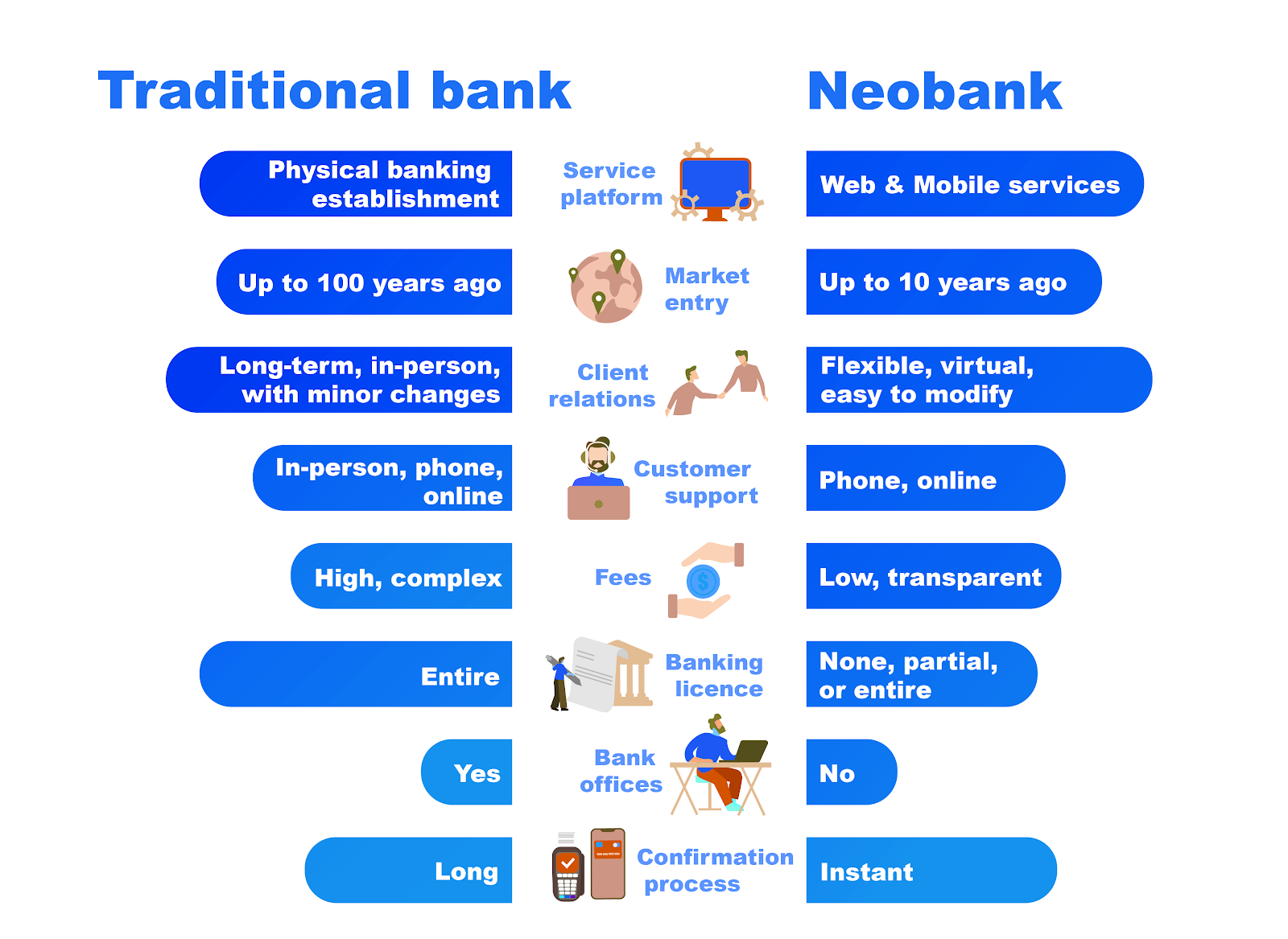Understanding Neobanks: What Sets Them Apart from Traditional Banks

Introduction
The banking industry has undergone significant transformation with the emergence of neobanks, which have gained substantial popularity and disrupted traditional banking practices. In recent years, there has been a growing interest in understanding the concept of neobanks and how they differ from traditional banks. This essay aims to shed light on what neobanks actually are and highlight the factors that set them apart from their conventional counterparts.
Defining Neobanks
Neobanks, also known as digital banks or challenger banks, refer to financial institutions primarily operating digitally without any physical branches. These innovative entities leverage technology to offer a wide range of financial services traditionally provided by brick-and-mortar banks but with enhanced convenience and flexibility for customers.
Key Characteristics of Neobanks
1. Digital-First Approach
Unlike conventional banks, neobanks operate solely through online platforms such as mobile applications or web portals. They eliminate the need for physical infrastructure like branches, allowing users to access all banking services conveniently from their smartphones or computers.
2. Customer-Centric Experience
Neobanks prioritizes delivering exceptional customer experiences by leveraging user-friendly interfaces and intuitive designs in their digital platforms. Through advanced technological solutions, they aim to provide seamless onboarding processes, personalized financial insights, real-time transaction notifications, and efficient customer support.
3. Agile Operations
Traditional banks often grapple with bureaucratic structures and legacy systems hindering quick decision-making processes and innovation implementation. Conversely, neobanks capitalize on agile operations through streamlined workflows powered by cutting-edge technologies such as artificial intelligence (AI) algorithms for fraud detection or automated loan approvals.
4. Innovative Financial Products & Services
One notable advantage offered by neobanks is their ability to introduce novel financial products tailored to meet modern consumer demands effectively. For instance, some neobank offerings include budgeting tools, expense tracking features, instant peer-to-peer transfers, round-up savings programs, and even cryptocurrency integration. These innovations provide customers with greater control over their financial decisions and empower them to achieve their financial goals.
5. Enhanced Accessibility
Neobanks strive to make financial services accessible to a broader range of individuals who may have been underserved or overlooked by traditional banking institutions. By eliminating the need for physical branches and reducing operational costs, neobanks can offer more competitive interest rates on deposits or loans while maintaining low or no account maintenance fees.
Key Differences from Traditional Banks

Now let us delve into the factors setting neobanks apart from traditional banks:
1. Physical Presence: While traditional banks rely heavily on physical branch networks for customer engagement and service delivery, neobanks operate entirely through digital channels without any brick-and-mortar presence.
2. Cost Structure: Neobanks leverage technology to minimize operational costs associated with maintaining physical branches and supporting large workforces. As a result, they often offer more competitive pricing structures compared to traditional banks.
3. Speed & Efficiency: With simplified processes and digitized operations, neobanks can provide faster turnaround times for various transactions such as account opening, loan approvals, or fund transfers.
4. Technology Integration: Neobanks harness technological advancements like AI, biometrics authentication systems, data analytics tools, and open Application Programming Interfaces (APIs) to enhance security measures as well as deliver personalized experiences tailored to individual customer needs.
5. Partnerships & Alliances: Due to their flexible business models and willingness to collaborate with fintech firms or other non-banking entities, having partnerships enables them to access additional functionalities offering customers a wider array of services beyond core banking.
Final Wrap Up
The rise of neobanks has revolutionized the way consumers interact with financial institutions by prioritizing convenience, simplicity, and innovation. Through their digital-first approach,customer-centric experiences, agile operations, innovative product offerings, and enhanced accessibility,neobanks have emerged as formidable alternatives to traditional banks. Neobanks continue to shape the future of banking by redefining industry norms and driving financial inclusion through their disruptive presence. As technology continues to evolve, the influence and significance of neobanks in the global financial landscape are set to grow exponentially.
Happy Banking..!
Also Read...




